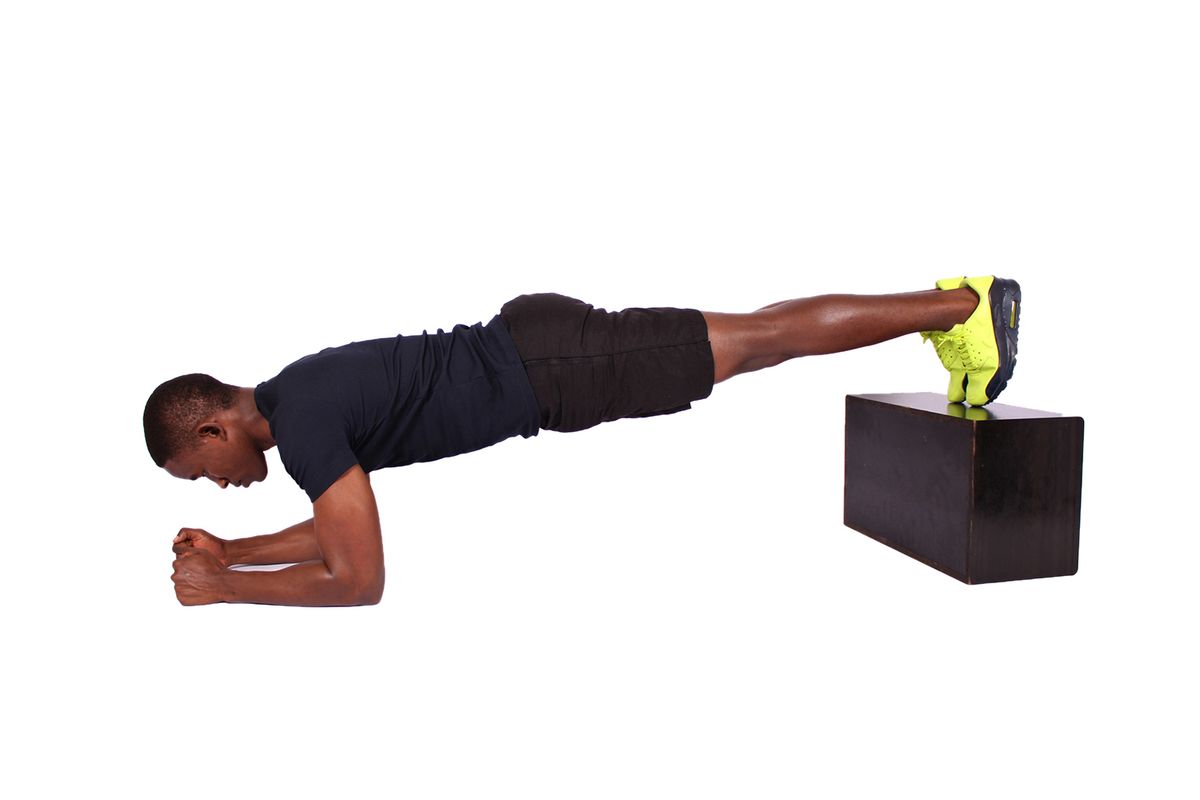
Leg Day Looms: How to Ensure Proper Leg Recovery After Workout
Kicking Off Recovery: Post-Workout Rituals

Cool Down with a Purpose
After you've crushed your leg day workout, it's tempting to just call it quits and collapse on the couch. But hold up! Cooling down is crucial for kick-starting your recovery process. Think of it as your body's way of easing back into reality after that epic squat session.
Cooling down helps to gradually lower your heart rate and prevent blood pooling in your legs, which can happen if you stop exercising too abruptly. Here's a quick rundown of an effective cool-down routine:
- Begin with 5 minutes of walking or light cycling to bring your heart rate down.
- Follow up with dynamic stretches that target the muscles you've just worked.
- Finish with deep breathing exercises to calm your nervous system.
Remember, a proper cool down can make a world of difference in how your legs feel the next day. It's the first step to getting back on your feet and ready for your next workout.
Stretch It Out: Flexibility's Role in Recovery
After you've powered through those squats and lunges, your muscles are screaming for some TLC. Stretching is the unsung hero of recovery, helping to alleviate muscle tightness and improve flexibility. When your muscles are flexible, they can move through a full range of motion, reducing the risk of injury and making your next workout that much more effective.
Stretching isn't just about touching your toes; it's a deliberate process that aids in muscle repair and prepares your body for the next bout of exercise. Here's a quick rundown of stretches that target key leg muscles:
- Quadriceps: Standing quad stretch
- Hamstrings: Seated hamstring stretch
- Calves: Wall calf stretch
- Hip Flexors: Kneeling hip flexor stretch
- Glutes: Seated figure-four stretch
Remember, the goal isn't to turn into a human pretzel overnight. It's about consistent, gentle stretching to enhance recovery and performance.
Incorporating a variety of stretches into your post-workout routine can make a world of difference. Take it slow, hold each stretch for at least 30 seconds, and never push to the point of pain. Your muscles will thank you tomorrow!
Refuel the Tank: Nutrition for Muscle Repair
After you've given your all in a leg workout, your muscles are screaming for some TLC. Proper nutrition is key to muscle repair, and it's all about timing and balance. Slamming a protein shake right after your squats isn't just a gym bro stereotype; it's science. Your muscles are most receptive to nutrients within 30 minutes to an hour post-workout.
Protein is the building block of muscle repair, but don't forget about carbs! They're your body's preferred source of energy and help shuttle that protein to your tired muscles. Here's a quick breakdown of what your post-leg day meal could look like:
- Protein: Grilled chicken, tofu, or a whey protein shake
- Carbs: Sweet potatoes, brown rice, or a banana
- Fats: Avocado, nuts, or a drizzle of olive oil
Remember, hydration is part of refueling too. Water helps transport nutrients to your cells and flushes out metabolic waste. So, chug that H2O like it's your job!
Lastly, don't underestimate the power of micronutrients. Vitamins and minerals from fruits and veggies help fight inflammation and support overall recovery. So, pile that plate high with colorful produce and give your legs the recovery feast they deserve!
The Day After: Active Recovery Techniques

Keep Moving: Low-Impact Activities
After you've given your all during leg day, it's tempting to plop down on the couch and veg out. But hold up—your muscles are begging for a different kind of TLC. Keep the blood flowing with low-impact activities; it's like sending your legs a love letter after the tough love of squats and lunges.
Walking, cycling, or even a leisurely swim can work wonders for your recovery. These activities help to reduce stiffness and can speed up the healing process by gently encouraging circulation to your weary muscles.
- Walking: A brisk 20-minute walk can help maintain mobility.
- Swimming: Gentle laps in the pool provide resistance without the strain.
- Cycling: A light spin session can keep the joints happy without overloading them.
Remember, the goal isn't to set new records but to stay loose and limber. Listen to your body and keep the intensity low; this isn't the time for heroics.
Hydration Station: Why Water Works Wonders
Ever wondered why your trainer keeps nagging about keeping a water bottle handy? Well, it's because hydration is key to recovery. After a grueling leg day, your muscles are screaming for water to help flush out the toxins and keep everything running smoothly.
Water isn't just about quenching thirst; it's a vital component in the muscle repair process. When you're well-hydrated, your body can transport nutrients to your muscles more efficiently, speeding up the recovery time. Plus, staying hydrated helps maintain the balance of electrolytes, which are crucial for muscle function.
- Drink water before, during, and after your workout.
- Aim for clear or light yellow urine as a sign of proper hydration.
- Listen to your body's thirst signals and respond promptly.
Remember, dehydration can sneak up on you and impact your recovery. It's not just about drinking water when you're thirsty; it's about making it a habit to sip regularly throughout the day, especially after intense workouts.
Massage and Foam Rolling: Ironing Out the Kinks
After putting your legs through the wringer, it's time to give them some TLC. Massage and foam rolling can be a godsend for sore muscles, helping to break up knots and increase blood flow. Think of it as a DIY deep-tissue massage that doesn't break the bank.
Foam rolling should be a staple in your recovery toolkit. It's not just about rolling back and forth; there's an art to it. Here's a quick guide to get you started:
- Start with gentle pressure and increase as tolerated.
- Roll slowly over each muscle group, pausing on tender spots.
- Spend at least 1-2 minutes on each major muscle group.
Remember, the goal isn't to inflict pain but to aid in recovery. If it's too painful, ease up a bit.
Consistency is key. Incorporate massage and foam rolling into your routine, and your legs will thank you. Not only does it help with recovery, but it can also improve flexibility and performance. So, roll out those mats and get to it!
Sleep It Off: The Power of Zzz's on Muscle Recovery

Setting the Stage for Quality Sleep
Ensuring a good night's sleep is crucial for leg recovery after a grueling workout. Creating a sleep-conducive environment is the first step to quality zzz's. Keep your bedroom cool, dark, and quiet to signal to your body that it's time to wind down.
Temperature plays a significant role in how well you sleep. Aim for a room temperature between 60-67 degrees Fahrenheit for optimal sleep conditions. Here's a quick checklist to help you set the stage:
- Dim the lights an hour before bed
- Invest in a comfortable mattress and pillows
- Avoid screens and blue light exposure
- Consider white noise or calming music if you're sensitive to sound
Remember, your bedroom should be a sanctuary for sleep and recovery. Treat it as a sacred space where rest is the main event, not just an afterthought.
By following these simple steps, you're not just investing in better sleep; you're investing in your body's ability to repair and strengthen after every leg day.
Sleep Cycles and Muscle Repair: The Connection
Ever wondered why you feel like a superhero after a good night's sleep? Sleep isn't just for the brain; it's prime time for muscle repair. During the deeper stages of sleep, your body goes into overdrive repairing muscle tissue and restoring energy levels. It's like your muscles are throwing a little repair party while you're off in dreamland.
Growth hormone plays a VIP role here, as it's released in pulses during sleep, particularly during the slow-wave phase. This hormone is crucial for tissue growth and muscle repair, making sleep a non-negotiable part of your recovery game.
- Deep Sleep: Essential for growth hormone release and muscle repair.
- REM Sleep: Important for cognitive function and overall recovery.
- Light Sleep: Helps transition into deeper sleep stages.
Remember, skimping on sleep means cheating your muscles out of recovery time. Aim for 7-9 hours to let your body do its thing.
So, if you're serious about your gains, don't play around with your zzz's. Make sleep a priority, and your muscles will thank you with strength and resilience. And hey, who doesn't love an excuse for a guilt-free nap?
Naps: Mini Recovery Sessions
Ever felt like a quick snooze could do wonders after a grueling leg day? Well, you're not wrong. Naps can be a secret weapon in your recovery arsenal, offering a brief respite for your muscles to heal and your energy to replenish. But not all naps are created equal.
Timing is everything when it comes to napping. A short 20-30 minute nap can boost alertness and performance without interfering with nighttime sleep. On the other hand, longer naps can lead to sleep inertia, that groggy feeling that can hang around after waking up.
- Short Naps (20-30 mins): Enhance alertness and motor performance.
- Long Naps (60+ mins): Can lead to sleep inertia, affecting evening sleep quality.
Remember, the goal is to feel refreshed, not more tired. So keep an eye on the clock and set an alarm if you need to.
Incorporating naps into your recovery routine can help you bounce back faster, but they're not a substitute for a good night's sleep. Listen to your body and find a balance that works for you. And remember, a little midday shut-eye might just be the boost you need to tackle your next workout with vigor.
Supplement Your Recovery: What Works and What Doesn't

The Scoop on Protein Powders
Let's talk about the muscle mender's best friend: protein powders. They're convenient, they're versatile, and they come in a dizzying array of flavors. But not all powders are created equal. Your muscles are picky eaters after a workout, craving quality protein to kickstart the repair process.
Whey, casein, and plant-based blends each have their own time and place. Here's a quick breakdown:
- Whey: Fast-absorbing, great for post-workout.
- Casein: Slow-digesting, ideal before bed.
- Plant-based: A go-to for those with dairy sensitivities or dietary preferences.
Remember, while protein powders can be a game-changer, they're supplements, not substitutes. Whole foods should still be the MVP of your diet.
Lastly, don't get swayed by flashy labels promising Herculean results. Check the ingredient list for added sugars and fillers. Your body—and your wallet—will thank you for choosing quality over hype.
Vitamins and Minerals: The Micro Recovery Agents
When it comes to leg day recovery, don't overlook the little guys. Vitamins and minerals play a crucial role in muscle repair and overall health. They're like the unsung heroes, working behind the scenes to ensure your muscles bounce back stronger.
Zinc and magnesium, for instance, are pivotal for muscle function and repair. Zinc helps with protein synthesis and wound healing, while magnesium is essential for muscle relaxation and reducing cramps. Here's a quick rundown of some key players:
- Vitamin C: Aids in collagen formation and immune defense.
- Vitamin D: Supports bone health and muscle function.
- Iron: Essential for oxygen transport to your muscles.
- Calcium: Crucial for muscle contractions and bone strength.
Remember, while supplements can help, the best way to get these nutrients is through a balanced diet full of colorful fruits, veggies, lean proteins, and whole grains.
It's not just about popping pills; it's about creating a sustainable, nutrient-rich diet that supports your recovery and overall well-being. Listen to your body and give it the nutritional tools it needs to repair and grow after a grueling leg workout.
The Lowdown on Recovery Supplements
Navigating the maze of recovery supplements can be a headache. Not all supplements are created equal, and while some can aid in your leg day recovery, others might just drain your wallet. It's crucial to know which supplements have science on their side.
Creatine, for example, is one of the most researched supplements and is known for its benefits in strength and recovery. But what about the others? Here's a quick rundown:
- BCAAs: Branched-chain amino acids are thought to reduce muscle soreness after a workout.
- Glutamine: Some studies suggest it can decrease muscle recovery time.
- Omega-3 Fatty Acids: Known for anti-inflammatory effects which may help with muscle repair.
Remember, supplements should complement your diet, not replace whole foods. Whole foods provide a complex array of nutrients that supplements can't fully replicate.
Before you start popping pills or mixing powders, consider your overall diet and hydration levels. These are the foundation of good recovery. Supplements can be helpful, but they're not a magic solution. Listen to your body and consult with a healthcare professional to tailor a recovery plan that's right for you.
Listening to Your Body: Recognizing Signs of Overtraining

Muscle Soreness vs. Pain: Knowing the Difference
Ever hit the gym hard and felt like you've been hit by a truck the next day? That's muscle soreness for you, and it's a totally normal part of the recovery process. But when does an 'ouch' signal something more serious? Knowing the difference between muscle soreness and pain is crucial for preventing injury and keeping your leg day gains on track.
Delayed Onset Muscle Soreness (DOMS) is the good kind of hurt—it means you've pushed your muscles just enough to spark growth. Look for these signs:
- Tenderness when touching your muscles
- Stiffness when you move
- A satisfying sense of fatigue
On the flip side, pain—especially sharp, localized, or persistent pain—can be a red flag. It's your body's way of saying, 'Hey, take it easy!' If pain disrupts your daily activities or doesn't improve with rest, it's time to listen to your body and possibly seek medical advice.
Remember, soreness is a part of the process, but pain is not. Don't ignore what your body is telling you; it knows the difference even if your mind is set on pushing through.
Rest Days: An Essential Part of Training
Think of rest days as the unsung heroes of your workout regimen. They're not just about being lazy; they're a critical component of muscle growth and overall fitness. Rest isn't a retreat; it's an investment in your next performance.
Recovery isn't just about what you do, but also what you don't do. On rest days, your body repairs the micro-tears in muscle fibers, which is essential for strength building. It's like giving your body a permission slip to do its behind-the-scenes magic.
- Listen to your body's fatigue signals
- Avoid high-intensity workouts
- Engage in light activities like walking or yoga
Remember, rest days can be just as productive for your fitness goals as the days you hit the gym hard. They prevent burnout and reduce the risk of injury, keeping you on track for the long haul.
Adapting Your Workout to Your Recovery Needs
It's all about balance, folks. Listening to your body is key when it comes to tweaking your workout routine. If you're feeling more beat-up than usual, it might be time to dial it back a notch. Remember, recovery isn't just about what you do after the gym—it's about how you adapt your exercises to prevent overtraining in the first place.
Recovery is a dynamic process, and your workout plan should be too. Don't be afraid to switch things up based on how you're feeling.
Here's a quick checklist to help you adjust your workouts to your body's feedback:
- Assess your energy levels before hitting the weights
- Scale back the intensity if muscle soreness lingers longer than usual
- Incorporate more rest days if fatigue is knocking on your door
- Vary your exercises to target different muscle groups and avoid repetitive strain
Remember, the goal is to get stronger, not to push through pain and end up on the sidelines. So, take a step back when needed, and come back stronger!


